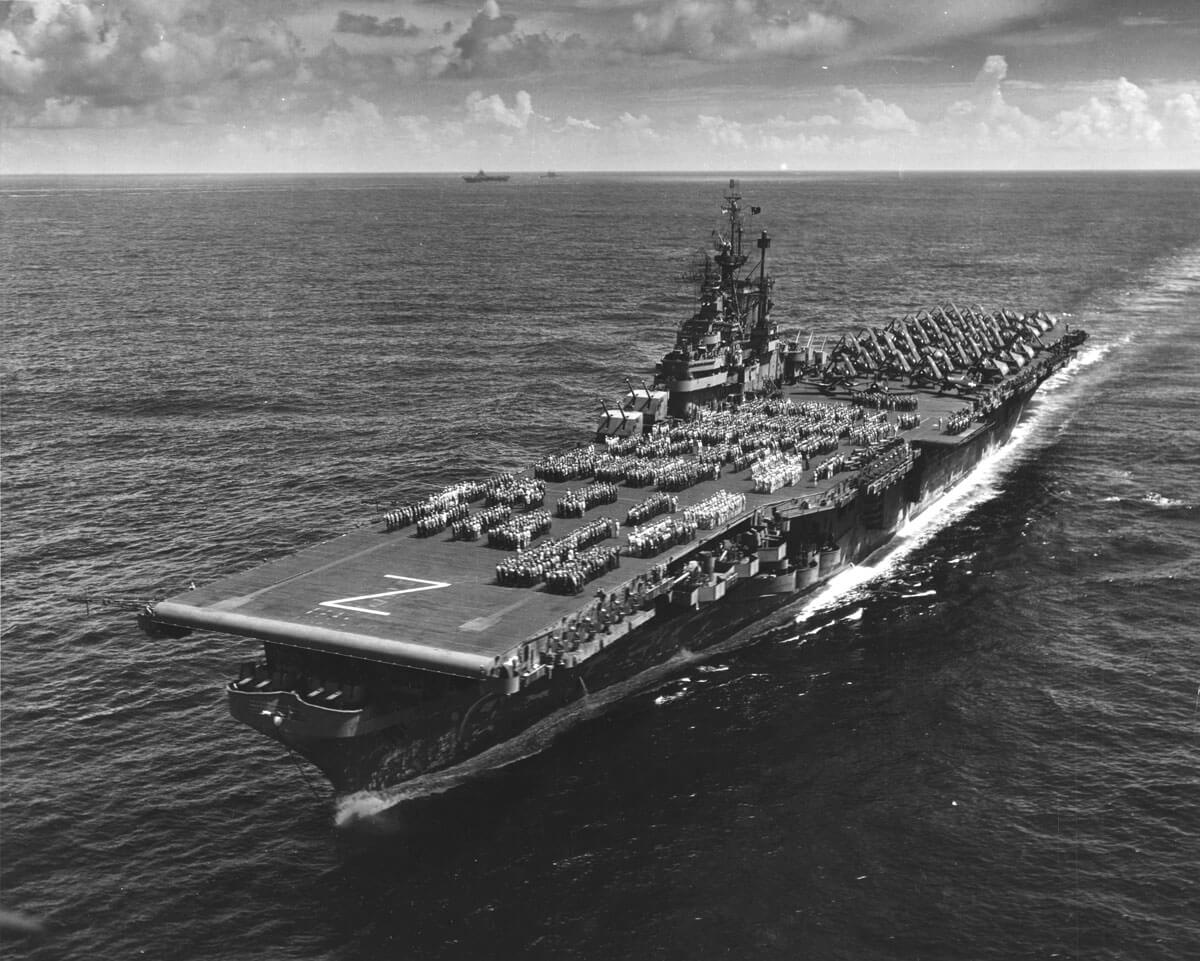Asbestos Exposure on the USS Shangri-La

Hull Number: CV-38
Type: Aircraft Carrier
Class: Essex
Built: Portsmouth, VA
The USS Shangri-La was one of 24 Essex-class Aircraft Carriers commissioned by the U.S. Navy in the 1940s, constructed in the long-hull version of the design. Stretching 888 feet in length, it carried a complement of 3,448 officers and men, and held between 90 and 100 aircraft.
Active in the Pacific Theater of World War II and the conflict in Vietnam, the ship was awarded a total of five battle stars over the course of its nearly thirty-year career. This ship was decommissioned in 1971, and struck from the Naval Vessel Register in July 1982.
Asbestos was used liberally on ships built between the 1930’s and the mid-1970’s, making it likely that those who served aboard the USS Shangri-La were exposed at some point in the course of their regular duty.
Used in equipment including boilers, turbines, pumps, valves, and electrical components, as well as materials including gaskets and packing, asbestos was especially common in the engine and boiler spaces. This concentration left those working in these areas, such as Boiler Tenders and Machinist’s Mates, at an elevated risk.
While many of the companies who provided the Navy with asbestos products were aware of the dangers they posed, they did nothing to warn those serving on the USS Shangri-La or other ships from this era. This led many veterans to fall victim to mesothelioma, the only known cause of which is exposure to asbestos.
Victims of asbestos, including those diagnosed with mesothelioma, asbestosis, and lung cancer caused by asbestos, are entitled to seek compensation for their illness. Settlements can help offset or cover the staggering costs of medical care, and may provide additional sums for pain and suffering.
The law has limits placed on the time in which a lawsuit can be filed however, making it important to seek legal counsel soon after a diagnosis.
